


CAPSTONE DESIGN SHOWCASE 2022
-
DAYS
-
HOURS
-
MINUTES
-
SECONDS
COMING SOON





COMING SOON




Team members
Ooi Tian Sheng Christopher Brian (ASD), Azfar Hamidudin Bin K O Noordin (EPD), Chan Wen Pin Benjamin (EPD), Tan Xue Feng (EPD), Kong Yik Khuen (ISTD), Riley Riemann Chin Qingxun (ISTD)
Instructors:
Cyrille Pierre Joseph Jegourel, Kwan Wei Lek, Michael Reeves
Writing Instructors:
Teaching Assistant:
SOFT is a two-pronged solution that minimizes human injury when conducting drone flights in urban areas. It involves a simulation software that verifies the intended drone flight path and plots the path of least risk to avoid interaction with humans. Should there be a loss of drone flight capability, an airbag system mounted on the drone acts as a damage mitigation system to reduce overall impact energy on humans.
Drones can be used to augment incident response. However, drones may suffer from a catastophic loss of flight capability and free fall out of the sky, posing significant risks to humans and vehicles in an urban environment.
Drone Wayfinding
The wayfinding solution intends to minimize contact with humans. This is done by incorporating a path-finding algorithm that generates a safe path from a given source to destination.
Drone Fall Mitigation System
To further reduce the risk of injury arising from drone flight-failure, an airbag system is triggered the moment the drone starts to tumble out of the sky.

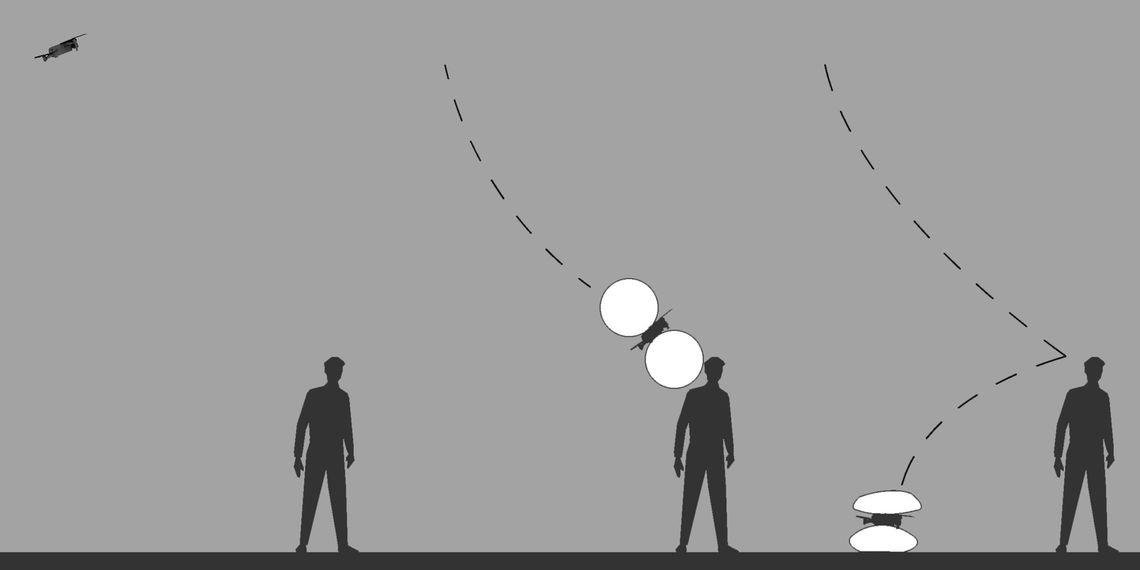
Data was first gathered and processed from various relevant authorities and then rendered into the software solution. A state-of-the-art 3D model gathered online was also incorporated to simulate the realistic terrain with geographical accuracy. The path generation software would also then display the possible path the drone would be able to fly over.

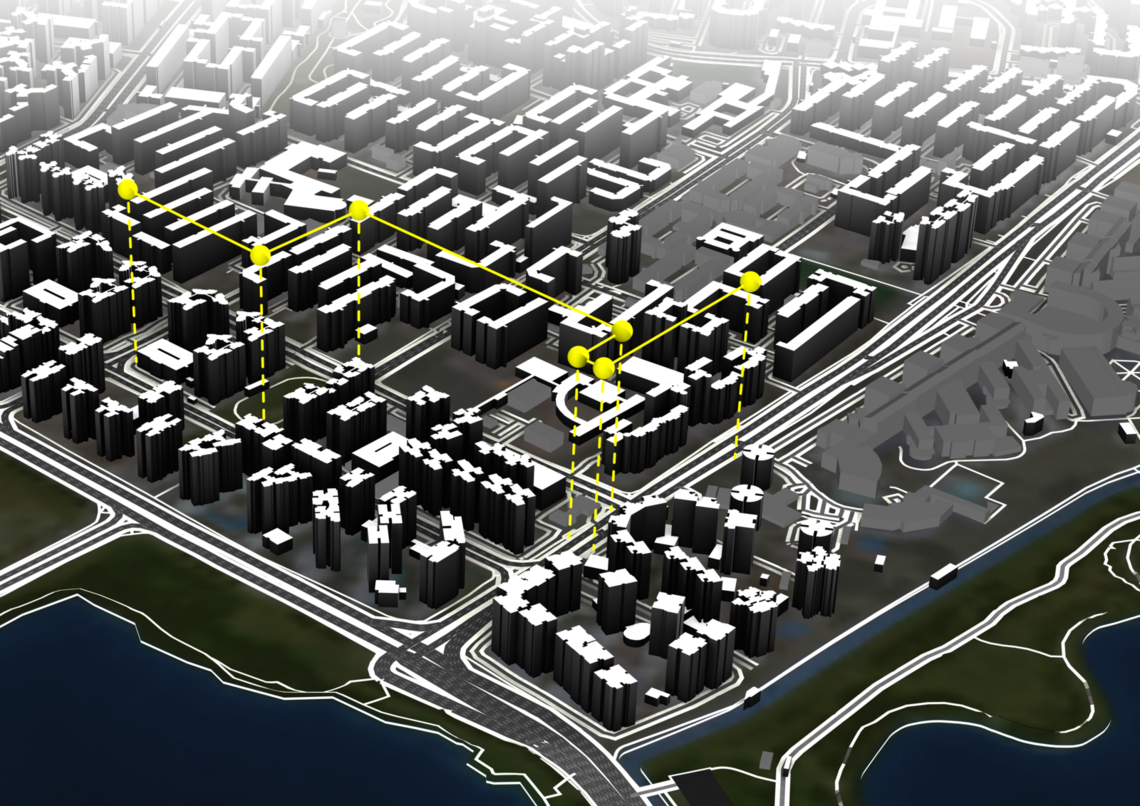
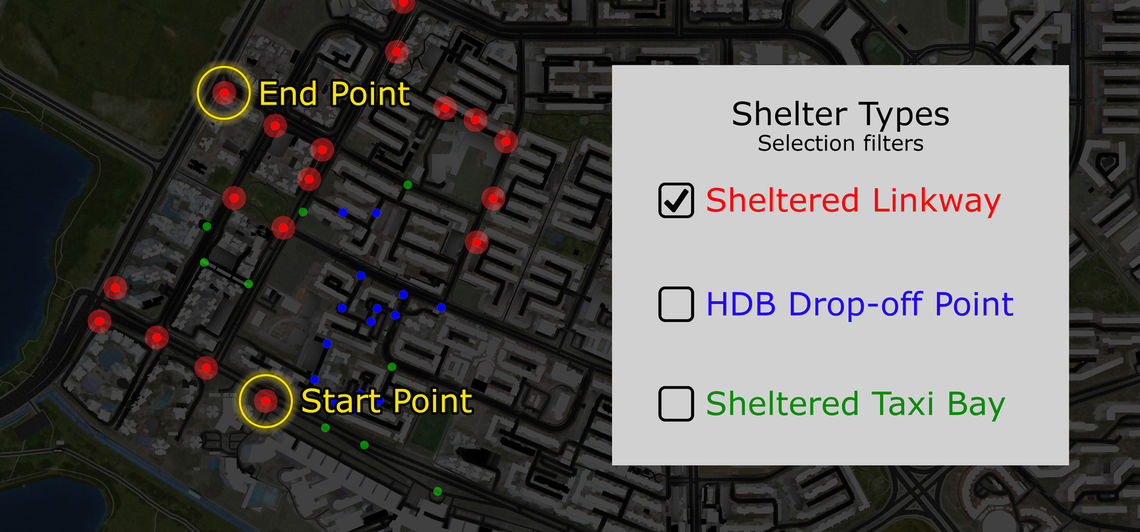
Users will be able to plan and customize their routes and solution based on user defined selection criteria. This will allow for more freedom in path generation while satisfying safety requirement. Routes are then generated using a pathfinding algorithm which searches for the next nearest node to the destination node. Effectively generating the shortest and safest path the drone can fly which will minimise human interaction during flight.
The 3D simulation provide a realistic view from the perspective of the drone by allowing users to toggle between First Person View & Third Person View enabling a realistic flight experience.

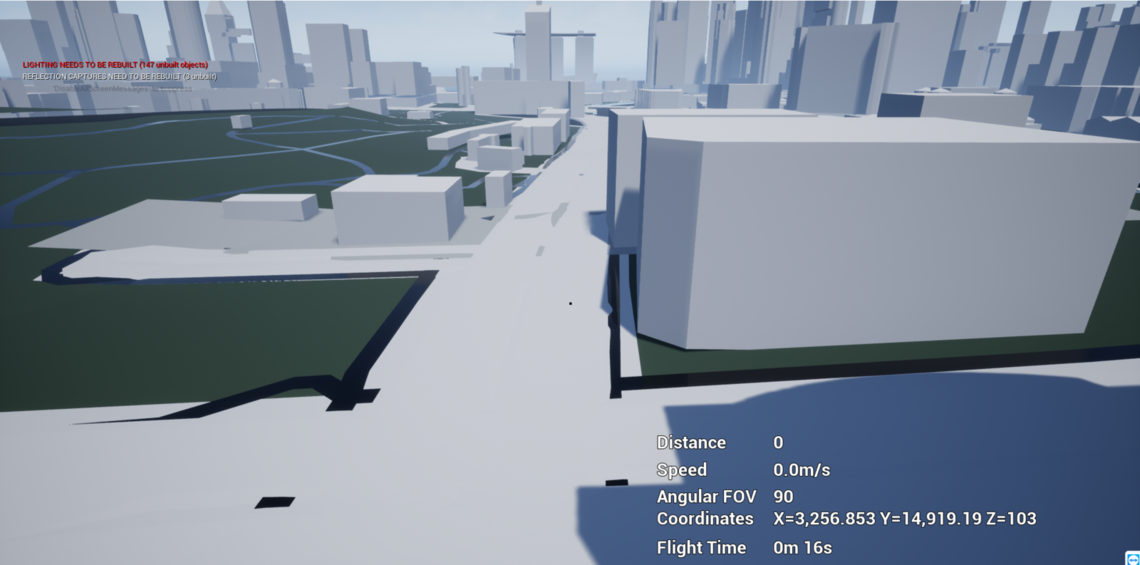
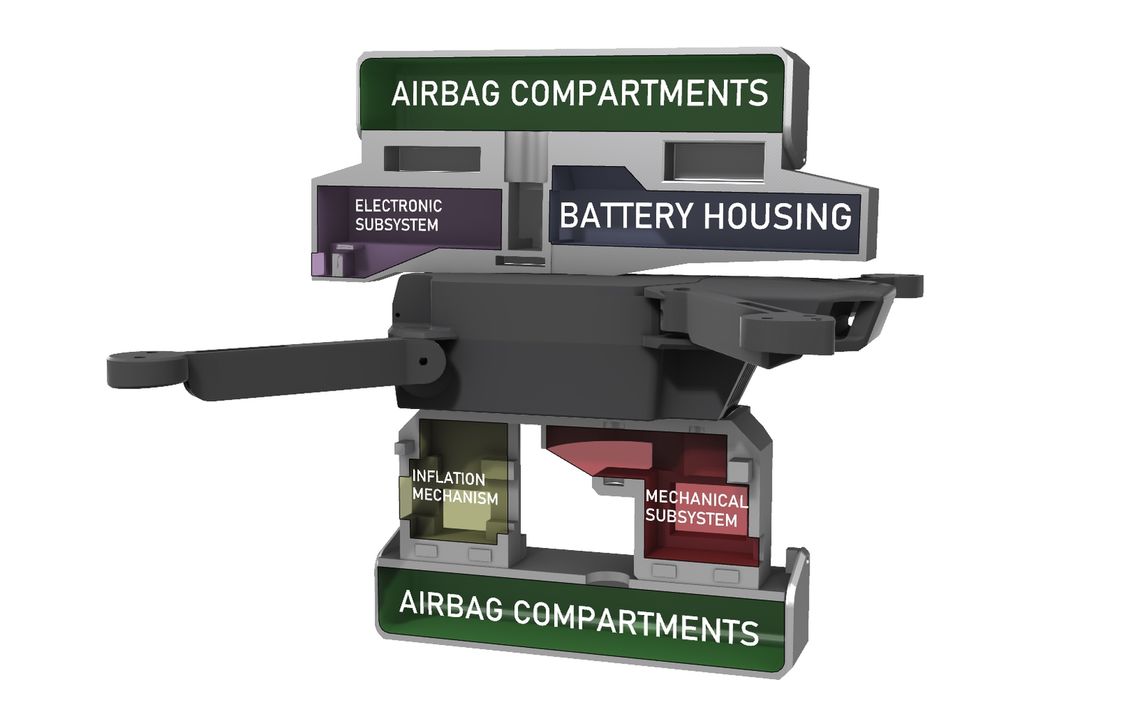
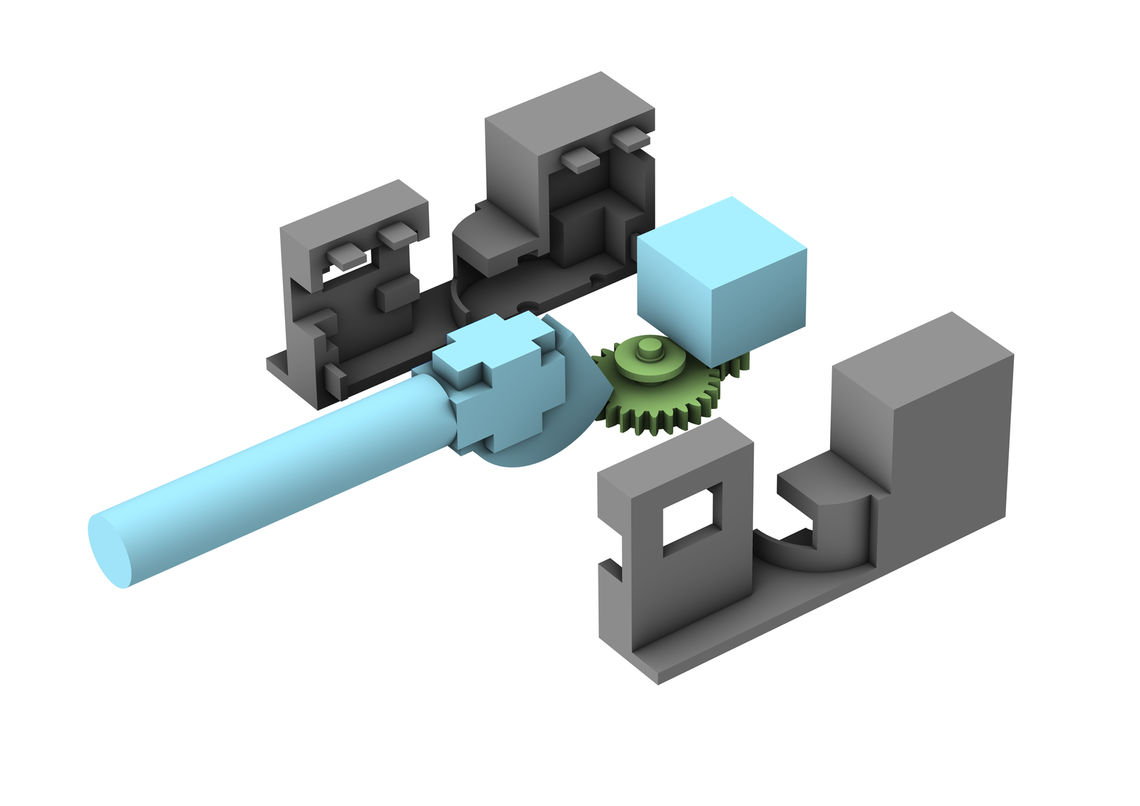
The airbag inflation mechanism comprises three key subsystems working in unison – a mechanical subsystem, an electrical subsystem and the airbag subsystem.The mechanical subsystem consists of a stepper motor that pulls on the actuation arm of the inflation mechanism through a force-multiplying gear train. The CO2 canister which is fastened onto the inflation mechanism will be punctured and highly compressed CO2 gas will be released.The electrical subsystem comprises a very compact circuitry that receives a signal from a remote control and energizes the stepper motor for inflation, as well as a high current battery that supplies current to the circuitry and stepper motor.In the airbag subsystem, the airbag is mounted on a large flat platform with folding compartment doors that are held in place using friction but can be swung out fully when pushed against by the inflating airbag. The top airbag is an X-shape to maximize drag during fall, while the bottom airbag is a sphere to maximize force dissipation. The airbags are connected to the CO2 canister through pneumatic tubing.Careful attention is paid to component selection within each of the subsystems; only the lightest and most compact components are selected to reduce the cross-sectional area and weight when mounted on the drone while incorporating safety factors into the selection criteria so that the components continue to work under harsher conditions.
With the components within the subsystems sorted, the group underwent multiple design iterations to house the subsystem components and ensure a tight integration between the subsystem housings and with the drone itself. The goal of the housing design was to create a prototype that was not only functional and adaptable to all drones within the weight class, but also compliment the drone design and aesthetics, while maintaining a streamline shape and low profile. Our initial iterations were bulky and too wide, but over the course of six iterations we were able to achieve a design that was satisfactory and meeting of objectives. The mechanical subsystem is mounted on the bottom of the drone while the electrical subsystem on top such that the mechanical parts do not interfere with the electrical components, and that the center of mass remains low due to the mechanical subsystem being heavier, improving the flight stability and fall
characteristics of the drone. An airbag compartment is mounted on top of the electrical subsystem and below the mechanical subsystem respectively.
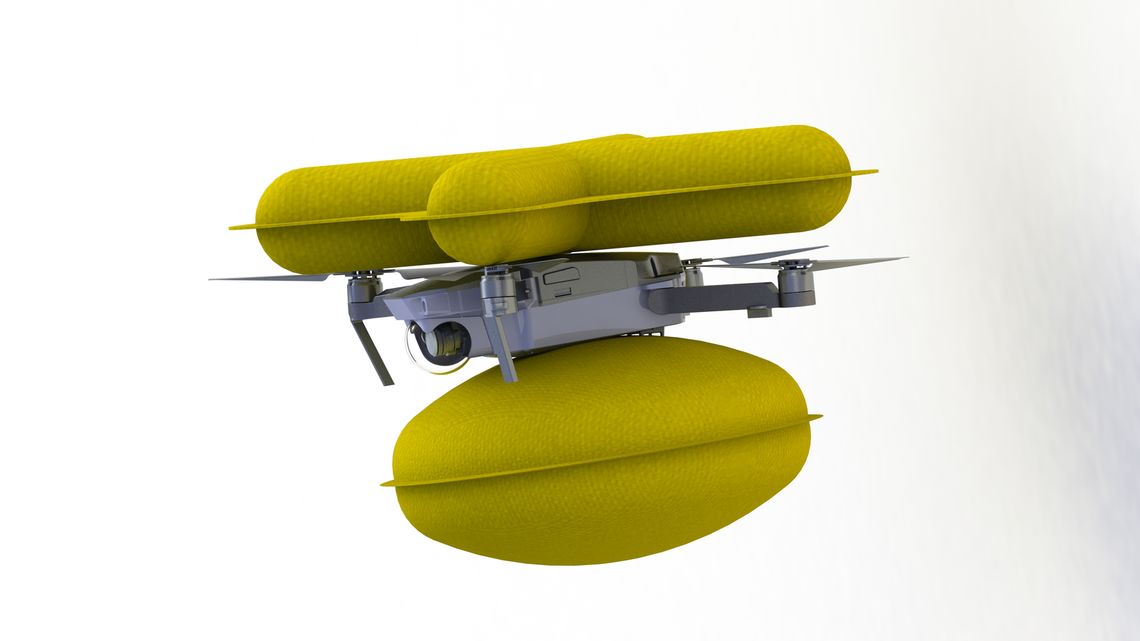

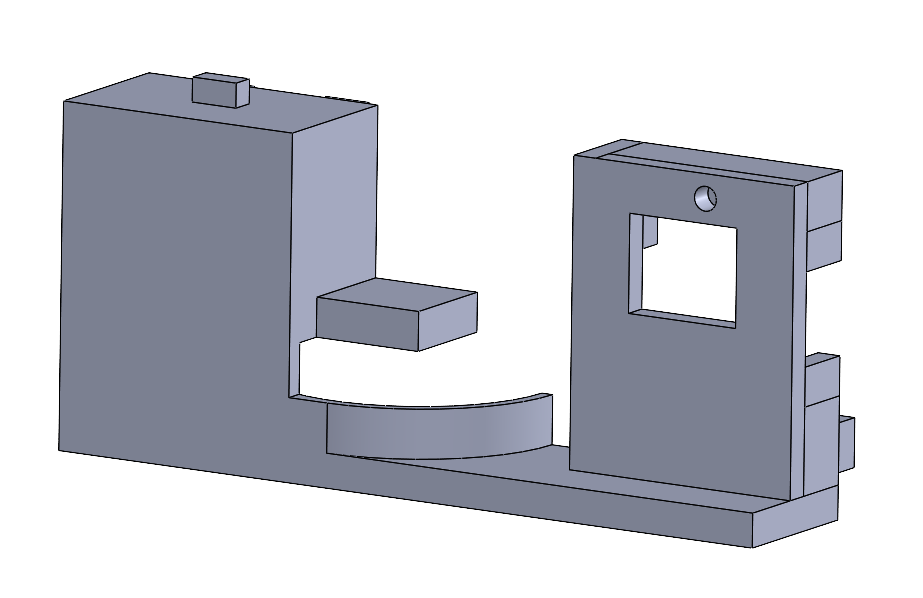
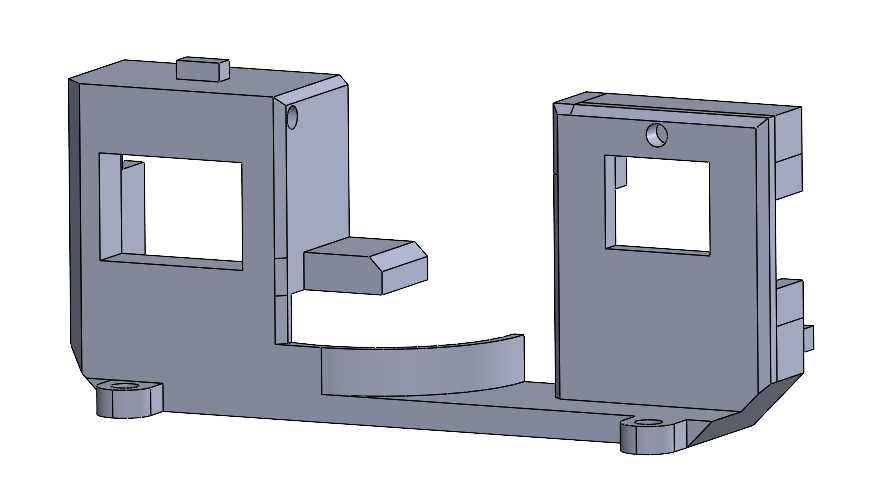
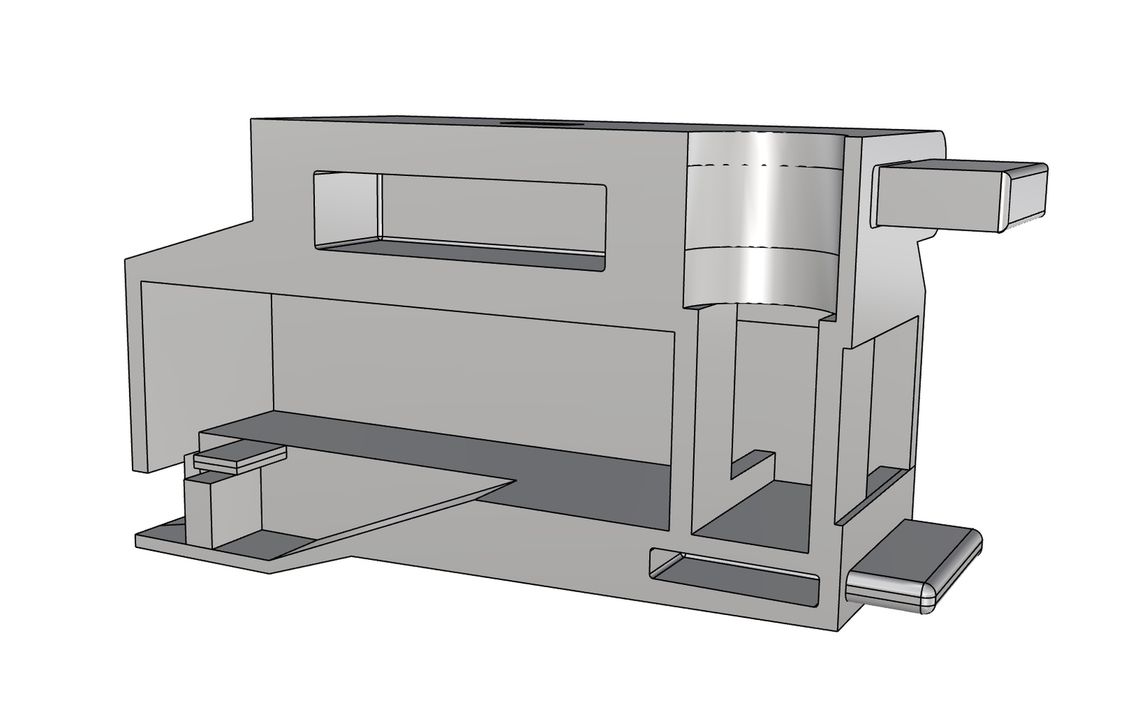
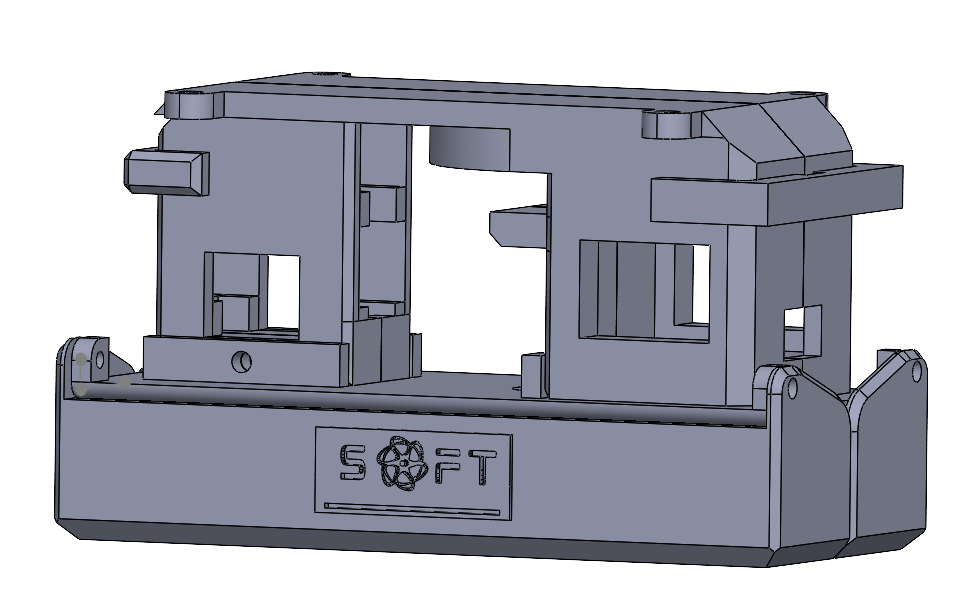
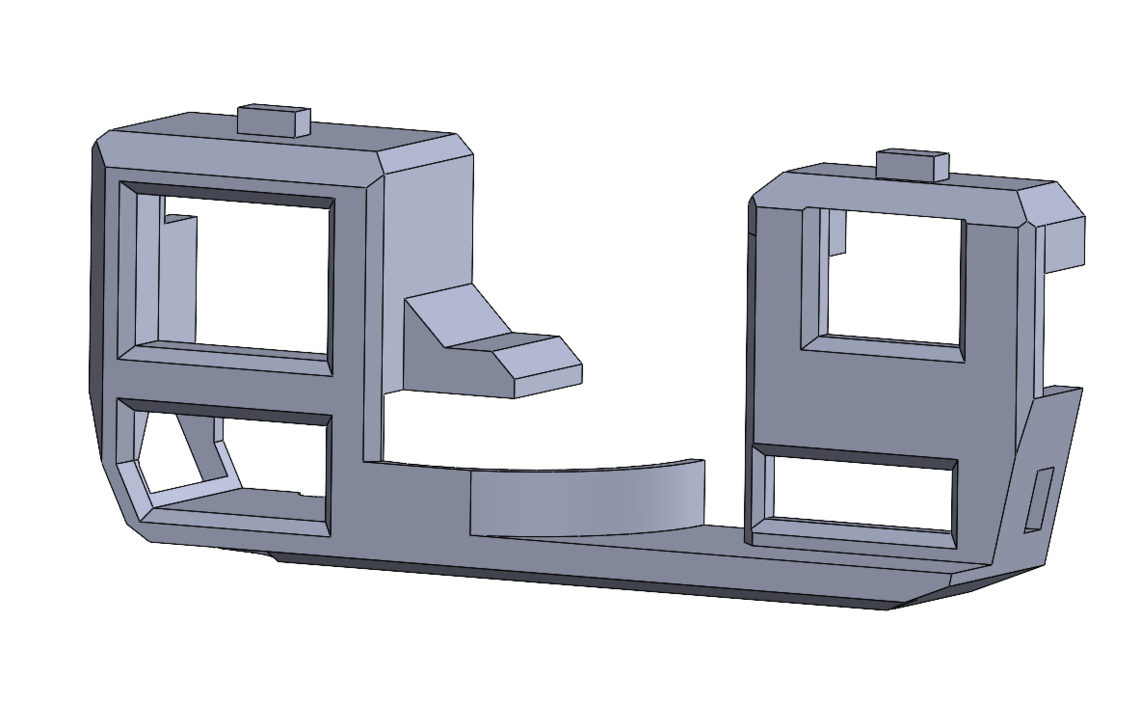
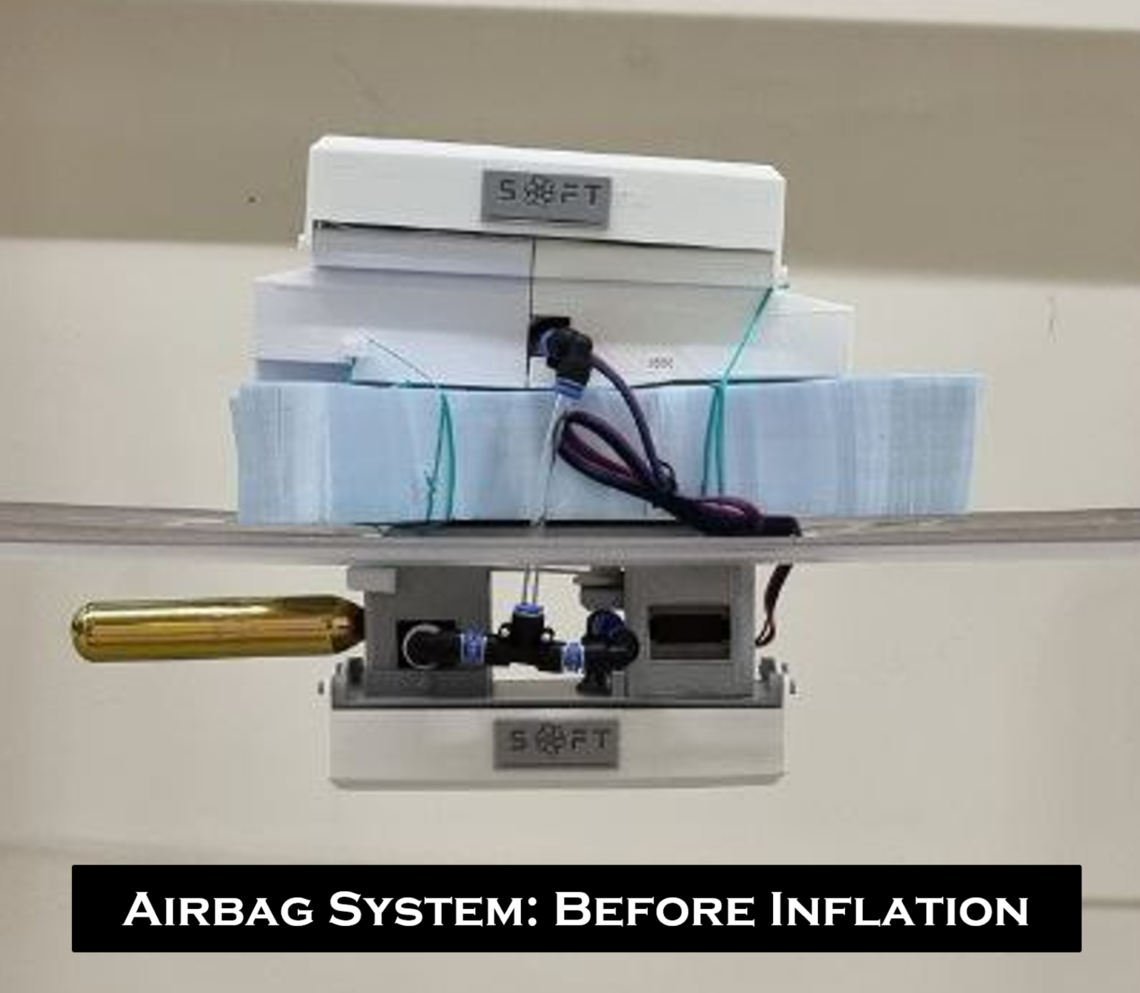
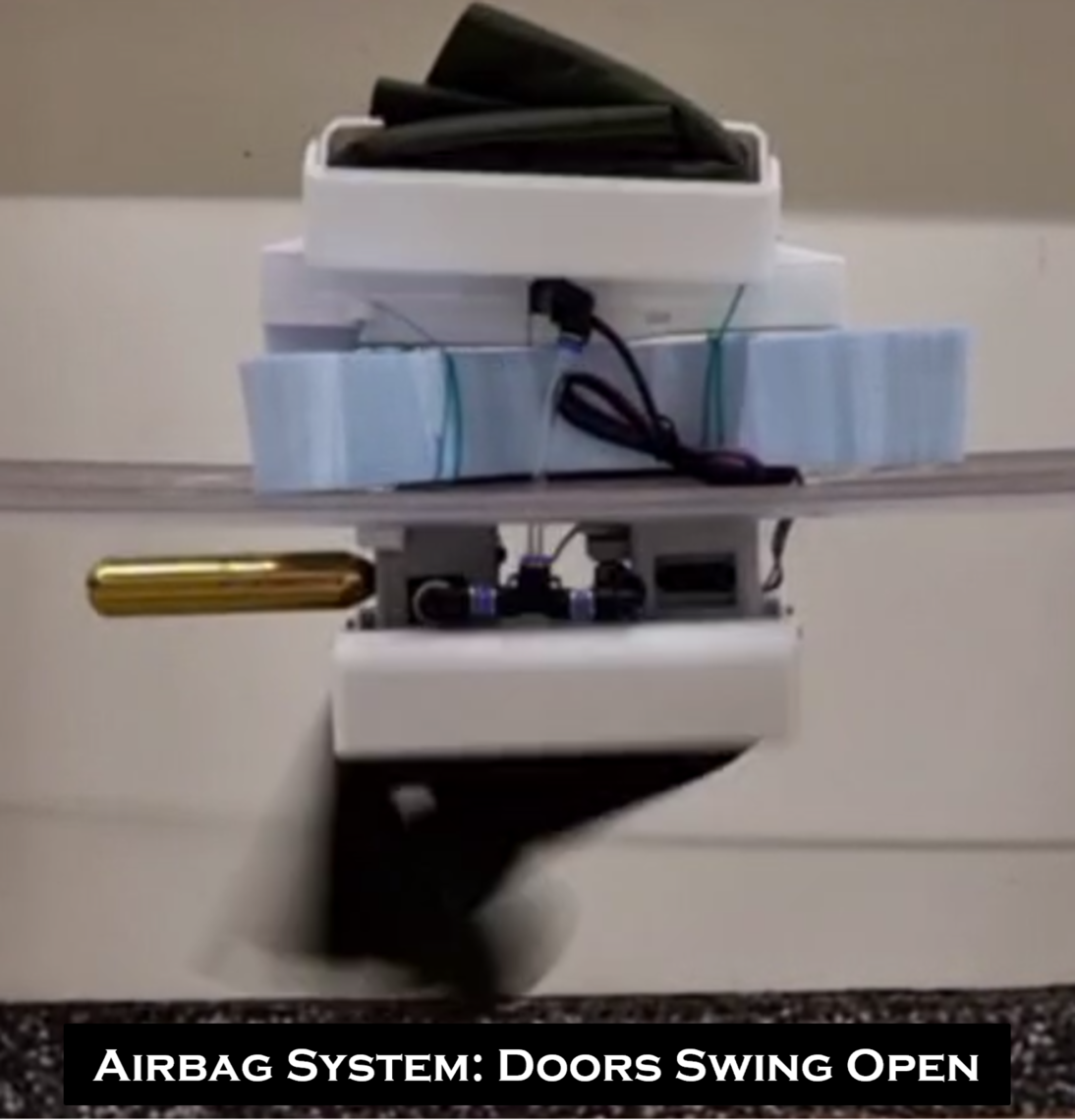
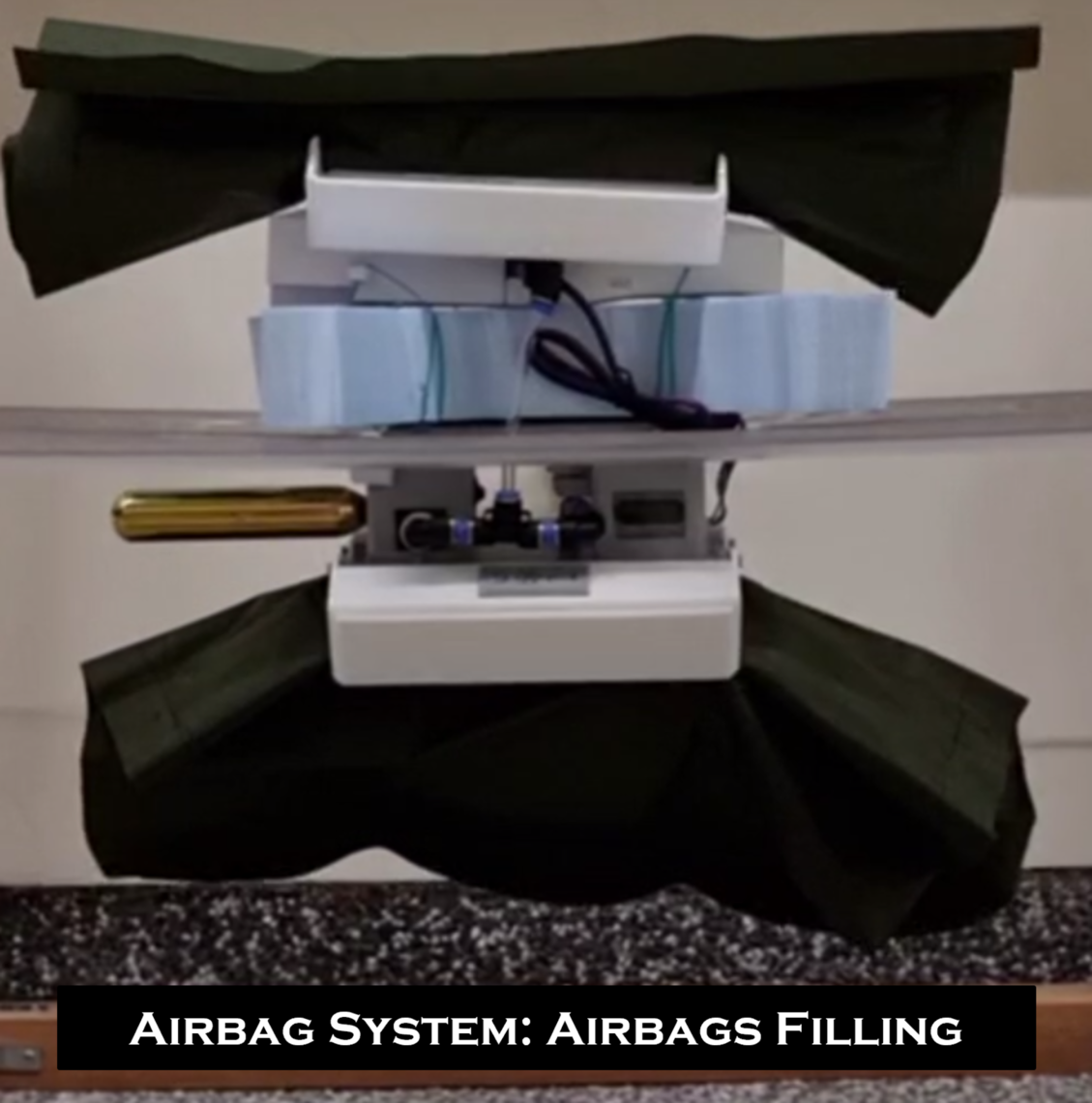

Our prototype works as such: when the remote is pressed, the on-board IR sensor receives the signal and actuates the inflation mechanism through the stepper motor, puncturing the CO2 canister. Compressed gas rushes out and into the two folded airbags. As the airbag fills up, it pushes against the airbag compartment doors and flings it open. The airbags are fully deployed.
The airbag prototype has achieved great results in reducing overall impact energy at a variety of heights. These results are benchmarked against a Head Injury Criterion (HIC) value that is able to tell us the likelihood of suffering from different types of injuries specifically from impacts to the human head.
Our airbag is able to reduce the impact force from a moderate level of injury to a minor level of injury at a height of 7-10m, and reducing the impact force from a critical level of injury to moderate level of injury. The airbag solution performs best up to heights of 15 meters with significant reductions in injury likelihood.
However, the potency of the airbag solution tapers off sharply at heights greater than 15 meters. With these results, perhaps another solution such as a hybrid parachute system with this airbag system may be able to account for the greater heights and provide the mitigation that a standalone airbag system lacks.

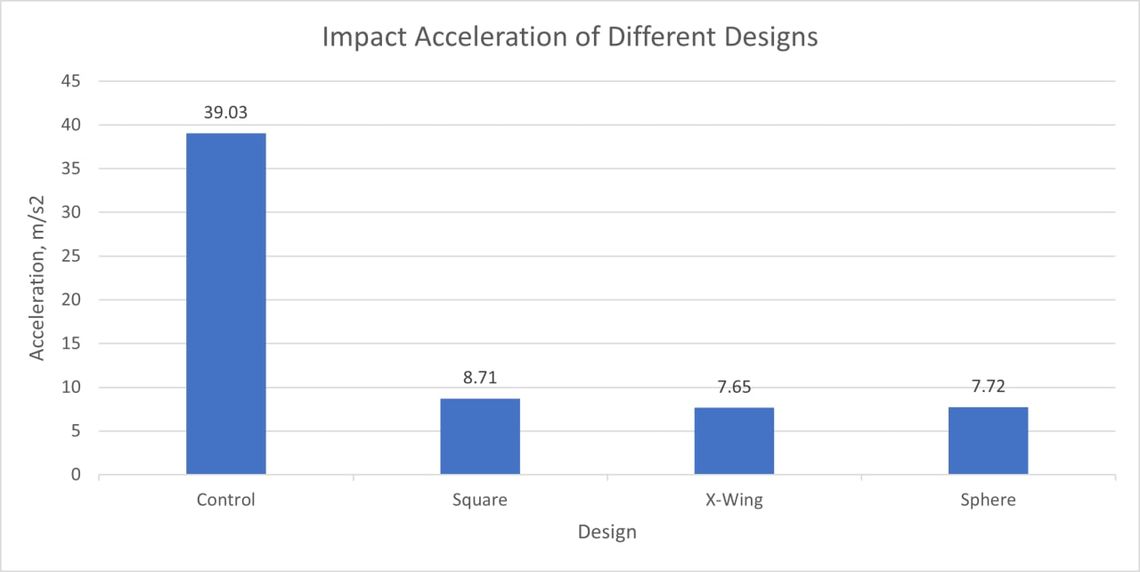


 Ooi Tian Sheng Christopher Brian
Architecture and Sustainable Design
Ooi Tian Sheng Christopher Brian
Architecture and Sustainable Design
 Azfar Hamidudin Bin K O Noordin
Engineering Product Development
Azfar Hamidudin Bin K O Noordin
Engineering Product Development
 Chan Wen Pin Benjamin
Engineering Product Development
Chan Wen Pin Benjamin
Engineering Product Development
 Tan Xue Feng
Engineering Product Development
Tan Xue Feng
Engineering Product Development
 Kong Yik Khuen
Information Systems Technology and Design
Kong Yik Khuen
Information Systems Technology and Design
 Riley Riemann Chin Qingxun
Information Systems Technology and Design
Riley Riemann Chin Qingxun
Information Systems Technology and Design

Ooi Tian Sheng Christopher Brian
Architecture and Sustainable Design

Azfar Hamidudin Bin K O Noordin
Engineering Product Development

Chan Wen Pin Benjamin
Engineering Product Development

Tan Xue Feng
Engineering Product Development

Kong Yik Khuen
Information Systems Technology and Design

Riley Riemann Chin Qingxun
Information Systems Technology and Design
© 2022 SUTD

